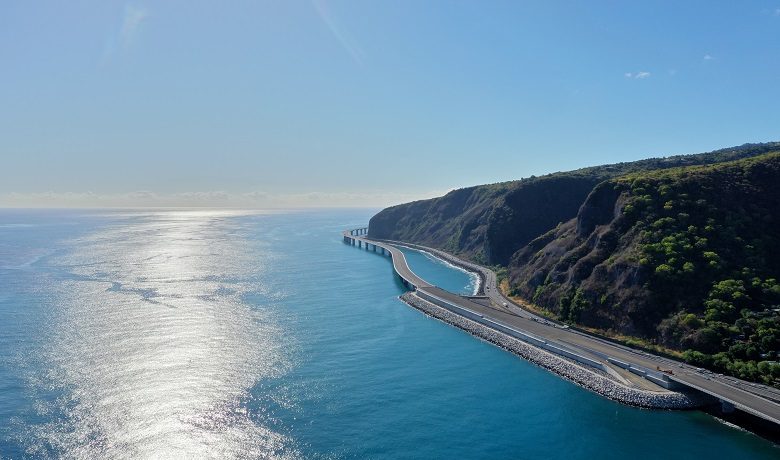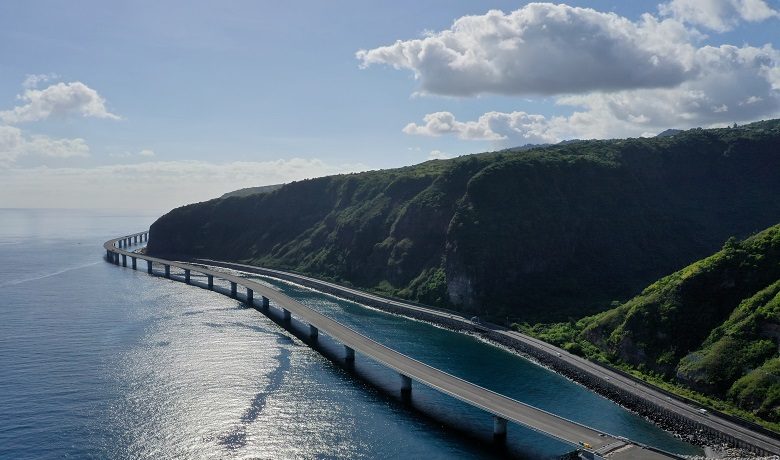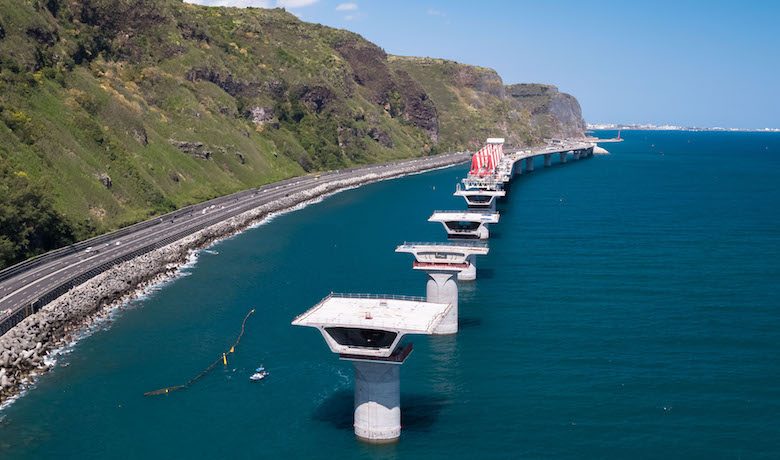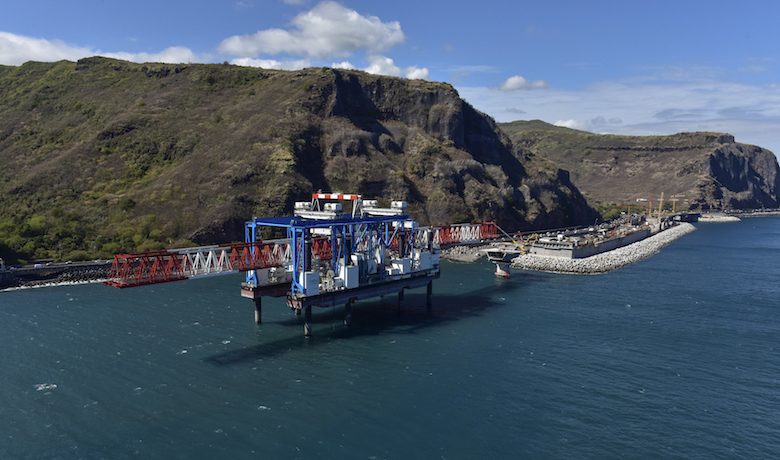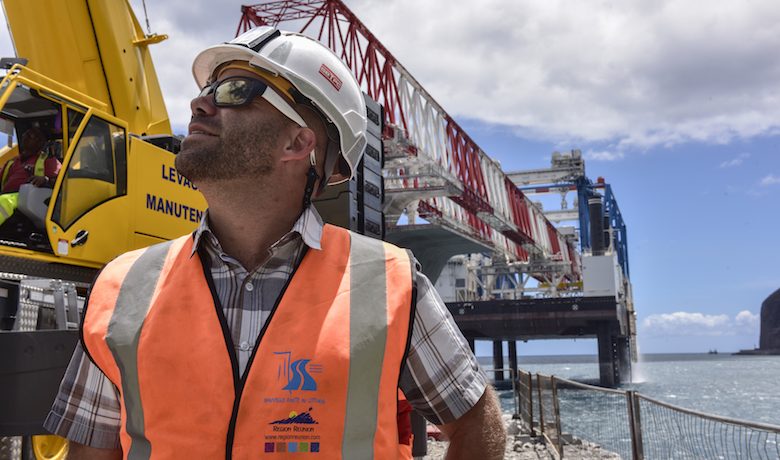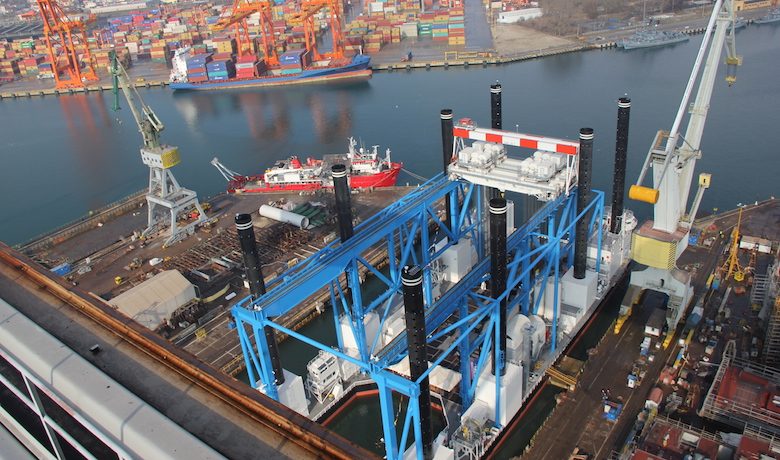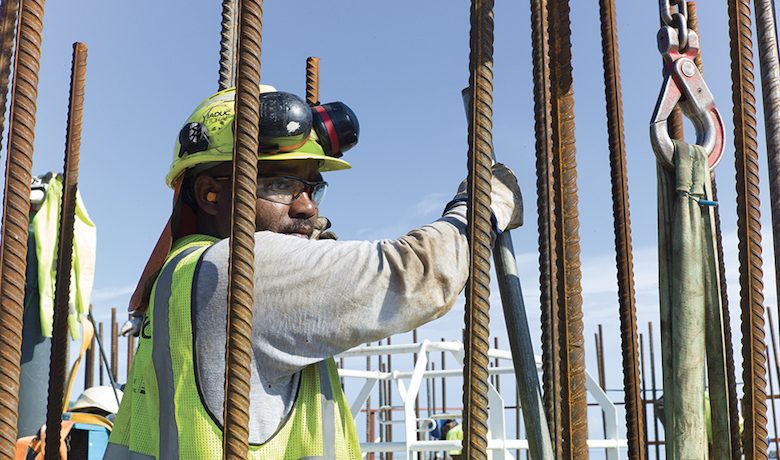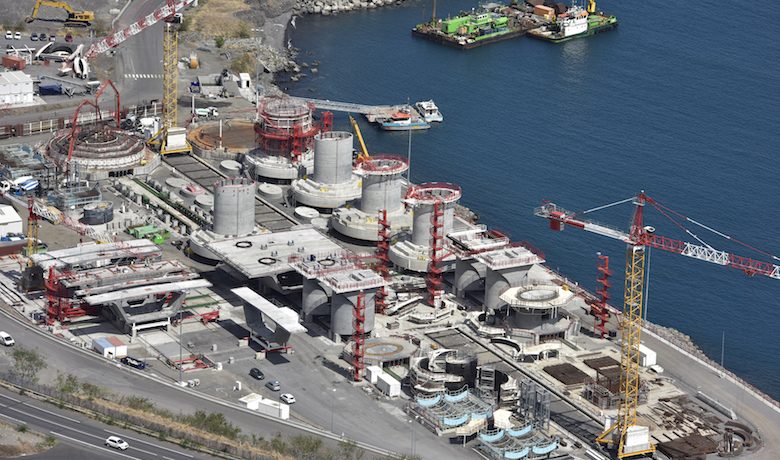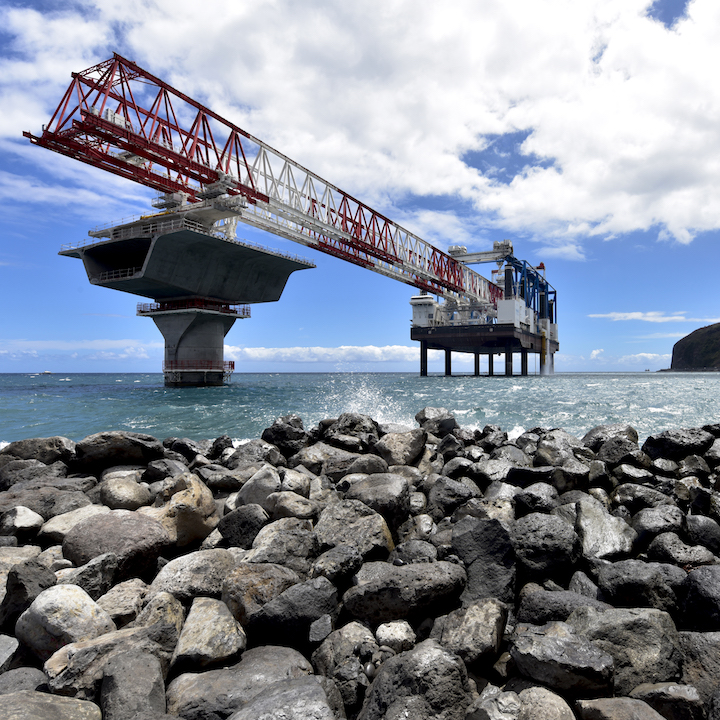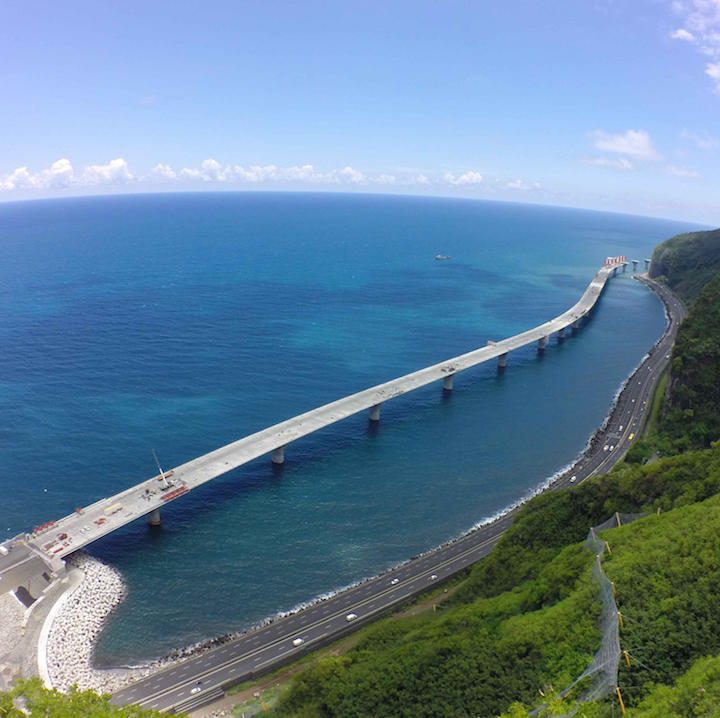BACKGROUND
The current coastal route (RN1), which is located between the sea and the cliff face, is subject to multiple natural hazards (rockslides, rain floods, flooding due to high tides); as a result, access to the road is often limited or suspended, intensive maintenance is required, and fatal car accidents occur fairly regularly.
The new coastal road is designed to replace RN1; it is being built above the sea 80 to 300 metres from shore in order to elude these natural hazards. This is a unique project in terms of its length (at 5.4 km, it is France’s longest viaduct of its kind), its width (nearly 30 m), its deck featuring a flexible dual 3-lane configuration that can accommodate a future dedicated lane for public transport (tram-train or bus). Given its open marine location, the infrastructure is exposed to particularly harsh weather and sea conditions (cyclones and extremely high tides) as well as sensitive and variable geotechnical conditions. In addition, the project must comply with very stringent environmental requirements, especially with regard to marine wildlife.


